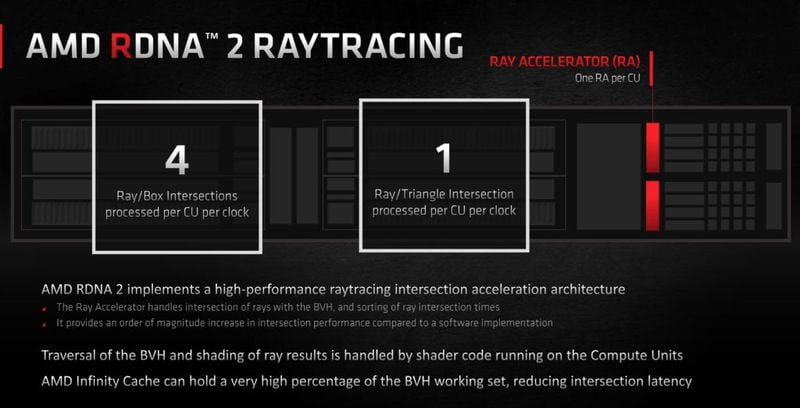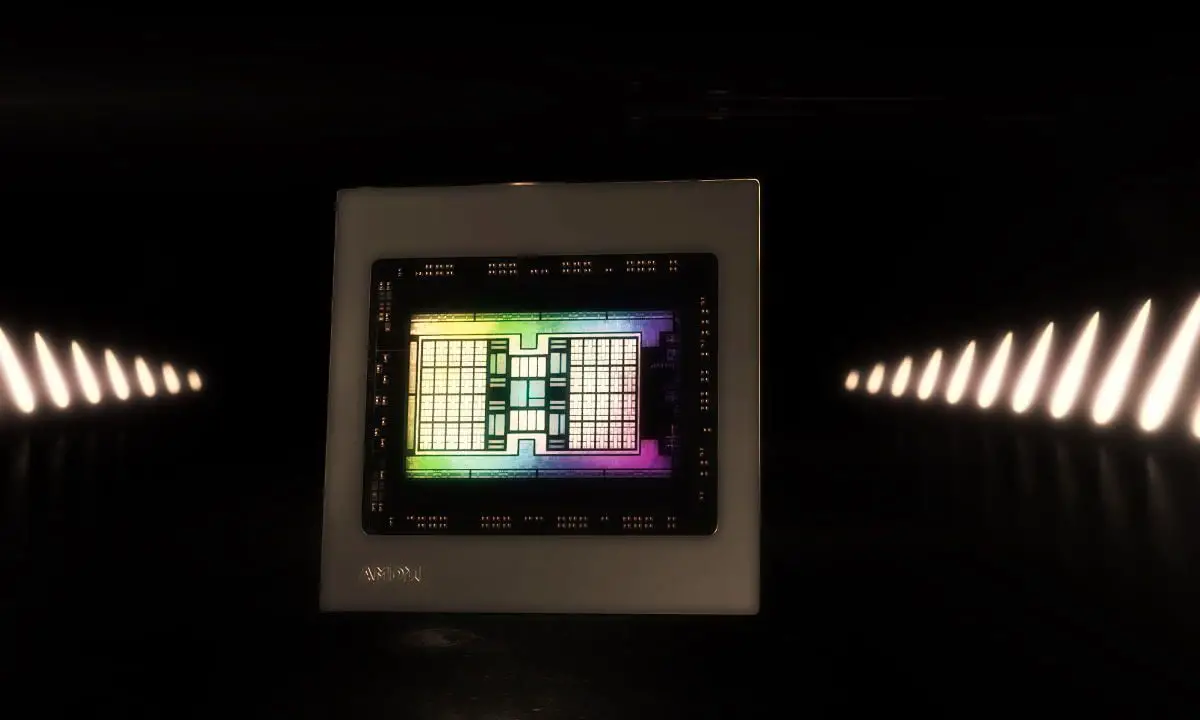A recent leak provides us with some very interesting information about the Radeon RX 7000, the next generation of graphics cards that AMD will launch, in theory, in the middle of next year. They will be based on RDNA 3 architecture and will be manufactured in a 5 nm process. It is important to contextualize something in this case, and that is that AMD has been using the 7 nm process in its graphics cards for quite some time, so a manufacturing node reduction makes a lot of sense.
The information has been spread across several sources, but we’ve made a compilation for you with the most interesting things we know, so far, about these new Radeon RX 7000. First of all, we should keep in mind that this could become a ray tracing-centric generation, meaning that its performance improvements will prioritize the acceleration of such technology. This is something very important and we will explain why.
When NVIDIA developed the Turing architecture it introduced RT cores and tensor cores. The former specialized in ray tracing acceleration, and the latter in artificial intelligence. These RT kernels are used to accelerate both ray-delta intersections and BVH transversal intersections, and frame delimiter intersections. With Ampere, he also added the ability to interpolate the position of the triangle over time, which allows ray tracing with motion blur to be generated.
This approach is more complex and consumes more space in the package, but it offers higher performance and relieves the shaders of the major burden of ray tracing. RT cores also have an asynchronous pipeline next to the tensor cores, which allows the concurrency of different simultaneous operations. In contrast, the RDNA 2 architecture uses a shared resource approach that is less effective, since:
- Ray-tracing units work with ray-delta intersections and frame delimiters, but BVH traversal intersections are handled by shaders.
- These ray-tracing units share resources with the texturing units, which makes them unable to work simultaneously, as we explained in our review of the Xbox X Series SoC.
- They lack the asynchronous operation capability that is present in Turing (RTX 20) and Ampere (RTX 30).

What can we expect from the RDNA 3-based Radeon RX 7000?
A reduction in the manufacturing process thanks to the leap to TSMC’s 5nm, as we have already told you. This should allow for higher power efficiency (performance per watt) and thermal efficiency (lower operating temperatures). We can also expect that this new architecture will maintain the 64 shaders per compute unit split, but we don’t think we will see a significant jump in raw performance, at least not as much as the one that occurred with the Radeon RX 6000 vs. the Radeon RX 5000.
If AMD decides to focus on improving ray tracing performance, they will have to introduce a major redesign at the silicon level that will allow them to have everything they need to more efficiently accelerate all the workload that such technology represents. With this in mind, we would not be surprised to see a set of specialized ray tracing cores integrated into RDNA 3 GPUs with an approach closer to (but not the same as) what NVIDIA has been adopting, as well as an asynchronous system to completely free the shaders from this workload and to achieve full specialization.
As far as its specifications are concerned, at the moment everything seems to indicate that the Navi 31/33 GPU will have up to 80 CUs, which would translate into a maximum of 5,120 shaders, the same as the Radeon RX 6900 XT. It is very curious data, as it reinforces everything we have told you before, that the Radeon RX 7000 could bring minor changes in raw power compared to the RX 6000, and that it could become (almost) a “lost generation” to improve its position working with ray tracing. Their arrival would be scheduled for the second half of 2022, and the first to arrive would be the most powerful solutions within the Radeon RX 7000 series, i.e. the Radeon RX 7900 XT and RX 7800/7800 XT.





